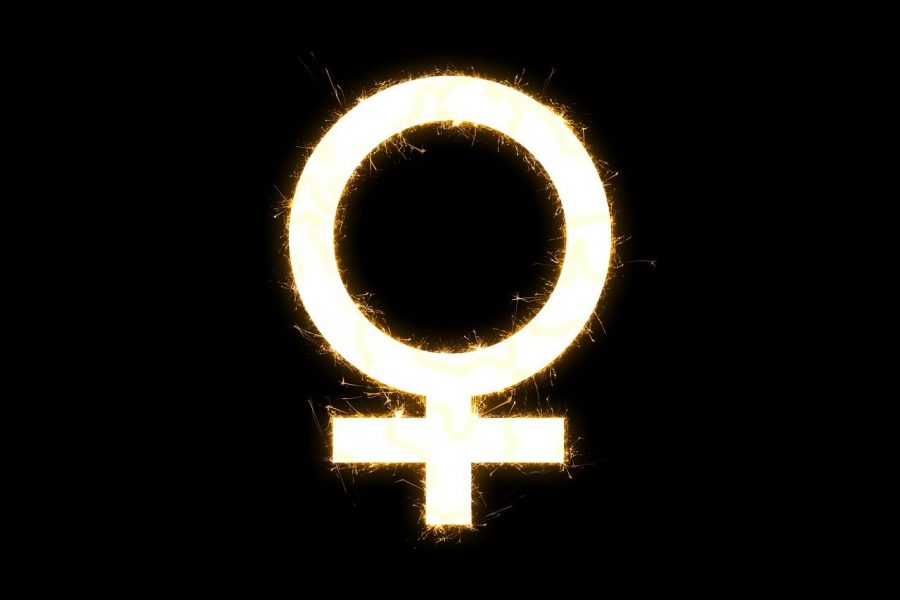The Subjective Social Complex of the Female Hierarchy Needs to be Amended
TheDigitalArtist
Toxic culture associated with women caused causes the social complex of female hierarchy. Photo courtesy of TheDigitalArtist.
September 15, 2021
Over history and time, women have been persecuted and ridiculed by men and often each other. Silly tropes, stereotypes, and assumptions have been made about the way women act, dress and even their looks.
Though It’s not just looks, it’s the toxic culture associated with each clique or group of girls. Who even created this? Stereotypes have been around way back into the earliest developed societies, with tropes like the town witch or hag. For example, in the 1200s to 1600s, the old women in the outskirts of villages who were wise and knowledgeable in old teachings like herbs were branded as witches.
To understand where the negative connotations of women come from, we have to look back to the 1200s and witches of the time period. For a time, Catholics and Protestants were witch crazy. However, they were originally witches who were not a part of the church’s rhetoric. Even in the bible, witchcraft was always briefly mentioned, and most references were not assigned to a specific gender. In a lot of these rural low populated areas, the people who worshiped in churches still held onto the ways of their old pagan religions. But now, instead of praying to flower goddesses and pagan deities, they worshiped biblical Mary. Magic was not seen as something unorthodox, but instead a tolerated remnant of the past.
Because witchcraft was seen as a tradition more than anything malevolent, when witches were punished, they were reprimanded under civil law not ecclesiastical. They could not be tried for heresy or for opposing the church, which was punishable by death. There were two types of magic: white and black. The public largely defended white magic because it was focused around herbal and holistic healing, while black magic dealt with the “unholy.” Though by the times of the 1400s, the two catagorations had completely disappeared and both could be classified and tried for as witchcraft. This targeted many women in healing or homeopathic medicine.
In the early 1300s, women had many rights within European societies. There were several laws in place to protect things such as inheritance and landowning. Though they were not equal, there was no prominent sense of patriarchal misogyny in the society. When the plague came, the Catholic Church started to crack down on practices that were unorthodox, resulting in pagans meeting in secret. Before the plague, old women were seen as knowledgeable in homeopathic medicine. Though afterwards, people were looking for a source to blame. Healthcare workers and once respected “hags” were accused of bringing the plague. Masks of shame were tied onto the heads of the accused, and punishments for the “crimes” they committed became increasingly more savage and brutalistic in nature. Though this was not enough, people still grew increasingly tired of the seemingly lax punishment of the accused witches. Until 1431 in France, unrest grew among the commons. Accused witch Joan of Arc was burned at the stake, waving in a new era of trials called “the burning times.”
Though most of the stereotypes we associate with witches came from a book called the Malleus Maleficarum (the Witch Hunter’s Bible). One of the most impactful books on human history ever written, it was directly responsible for the mass volume of witch trials that followed in the years after. Written in 1486 by Heinrich Kramer, a German churchman and member of the inquisition, Kramer would often use extreme public torture to gain confessions, and frequently falsified records to fit his argument and gaslight people into believing the crimes he claimed were being committed. Over 100,000 women died under this rhetoric. The book was meant to stand as the Catholic Church’s official view on witches. Kramer laid out what a witch was, the powers she held, and the legal actions the community should take against her. It was the second most circulated book in the world for 300 years. It led to the death of hundreds of thousands of people over its 300 year campaign. The book itself was horrifically misogynistic, claiming that women were evils of nature created to tempt and lure men to their downfall. Even though witches could be considered as men, after the book’s publication, the people accused were almost exclusively women.
Subsequently, this brutality against women never really faded away. Over time the acceptance of negative assumptions, comments, and stereotypes became widely acceptable even with women themselves. The high standards and ever changing “model woman” that men preferred in varying time periods pitted us against each other, and since then we haven’t been the same. In order to change these toxic perceptions, we need to be aware of the issue at hand and we have to be willing to change.



